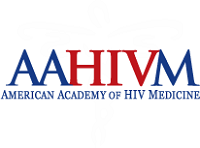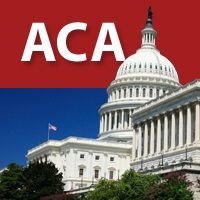Article
The Affordable Care Act and HIV
Author(s):
Before the Patient Protection and Affordable Care Act (ACA), which aims to provide affordable insurance coverage to uninsured or underinsured individuals, was implemented, there were many questions about how it would affect persons living with HIV (PLWH).
Since PLWH are disproportionately represented among the uninsured, many hoped t they might benefit substantially from this federal legislation.1
On the other hand, there were concerns about how the ACA would interact with the United States’ current complex, comprehensive HIV healthcare delivery system, such as Ryan White-funded clinics and AIDS Drug Assistance Programs (ADAPs), which are funded by the Ryan White Comprehensive AIDS Resources Emergency Act2.
Giving states the option to expand Medicaid left many low-income PLWH without health insurance, especially in the Medicaid non-expansion states. State ADAPs are a safety net to ensure that underinsured and uninsured PLWH receive key medications, such as anti-retroviral therapy.
Many ADAPs incorporated the ACA into their healthcare delivery model by funding clients’ ACA Qualified Health Plans (QHPs).3,4 (In Virginia, we were uncertain how the ACA would affect PLWH, so we partnered with colleagues at the Virginia Department of Health to study how Virginia ADAP’s implementation of the ACA would impact individuals’ HIV outcomes. Virginia ADAP formed a Health Insurance Marketplace Assistance Program (HIMAP) and encouraged its clients to enroll in QHPs. Virginia ADAP paid insurance premiums, deductibles and medication copayments under the ACA’s federal health insurance marketplace.
By spring 2015, we had the preliminary findings of our two-year study of the 3,933 ADAP clients who were eligible for ADAP-funded QHPs in Virginia. We found that patients enrolled in QHPs through Virginia ADAP’s HIMAP had higher rates of viral suppression (85%) than those who received only medications for HIV through the state’s Direct ADAP plan (79%)5
Our study determined that QHP enrollment was affected by many demographics known to affect linkage and engagement in care, such as age, race, gender and progression to an AIDS diagnosis6() We also found that QHP enrollment was affected by such healthcare delivery factors as the 2013 ADAP coverage program they used, the federal tax credits received and the specific HIV clinic where they received care.
Based on this, we questioned what might affect clinic-level differences in PLWH’s QHP enrollment. Would medical provider knowledge and attitudes influence ADAP clients’ QHP enrollment? We surveyed HIV medical providers’ knowledge and attitudes about the ACA on a national level.7
Results of this study were presented at AIDS 2016 in Durban, South Africa in July 2016 and at IDWeek 2016 in New Orleans, Louisiana in October 2016.
For our study, HIV medical providers (physician assistants, nurse practitioners, fellow physicians, and attending physicians) at academic hospitals with Infectious Diseases fellowship training programs were e-mailed a web-link to the survey. These providers were chosen due to the difficulty in obtaining contact information for HIV private practice providers across the nation.
The study was approved by the University of Virginia Institutional Review Board for Social and Behavioral Sciences and surveys were conducted during August and September 2015.
Respondents were surveyed on their sources of ACA information as well as their main source of ACA information.They were also asked ACA knowledge questions about tax credits, pre-existing conditions, Medicaid expansion, and its interaction with Ryan White-supported care. To gauge respondents’ attitudes about the ACA, they were asked to agree or disagree with the following statements on a 5 point scale (1- strongly disagree, 2- disagree, 3- neutral, 4- agree, 5- strongly agree): “The Affordable Care Act will improve the United States’ health outcomes;” “The Affordable Care Act will improve my HIV patients’ HIV outcomes;” and “The Affordable Care Act will improve my HIV patients’ non-HIV outcomes.
There were 253 survey respondents from 35 of the 50 states and the District of Columbia. The five states that were the most represented among respondents were New York, Virginia, California, North Carolina, and Massachusetts. Sixty percent of respondents were from Medicaid-expansion states. Two thirds of respondents were attending physicians. Providers had varying amount of experience with one-third reporting 0-5 years, one third reporting between 5-20 years, and one-third reporting 20 or more years.
In terms of sources of ACA knowledge, two-thirds reported using websites and newspapers/magazines. Almost half reported using clinic case managers, while a third reported using the radio. Interestingly, almost a third obtained ACA knowledge from their clinic patients.
When asked about their main source of ACA knowledge, providers reported websites (32%), newspapers or magazines (23%), and case managers (12%).The majority of respondents (61%) answered all four knowledge questions correctly, but approximately one-third answered “I don’t know” to at least one question.
Over 15% did not know that the ACA provides tax subsidies to people with low incomes, and more than 10% were not sure if the ACA eliminated the Ryan White Program. Seventy percent knew if their state had elected to expand Medicaid. There remain considerable knowledge gaps in HIV providers’ understanding of the ACA and its relation to HIV healthcare delivery in the United States.
In terms of ACA attitudes, the mean response for agreeing or disagreeing with the statement that “the ACA would improve national health outcomes” was close to four, which was associated with the response “agree.” For the statement about the ACA improving HIV patients’ non-HIV outcomes, the mean response was similar. These two attitudes did not vary based on whether a provider was in a Medicaid expansion or non-expansion state.
In terms of whether providers thought the ACA would improve their patients’ HIV outcomes, the mean response in Medicaid non-expansion states was 3.4 compared to 3.8 in Medicaid expansion states. This was statistically significant and indicates that providers in Medicaid expansion states were more optimistic about the ACA improving their patients’ HIV outcomes.
Our survey sample may be biased towards HIV providers who felt they were knowledgeable about the ACA, and therefore may overestimate the correct knowledge about the ACA. Even with that possible limitation, knowledge gaps were identified.
But, to effectively advise patients on ACA-related questions, providers should have basic ACA-related knowledge regarding tax credits, pre-existing conditions, Medicaid expansion, and its interaction with Ryan White Care Act. Education about the ACA for HIV medical providers could be disseminated through currently used resources (websites, newspapers/magazines, and case managers) to improve knowledge of this important health system shift and to enhance systems-based practice.
(1) Centers for Disease Control and Prevention. The Affordable Care Act Helps People Living with HIV/AIDS. 2014; Available at: http://www.cdc.gov/hiv/statistics/surveillance/terms.html. Accessed 9/8, 2015.
(2) Crowley JS, Nevins GR, Thompson M. The Americans With Disabilities Act and HIV/AIDS Discrimination: Unfinished Business. JAMA 2015 Jul 21;314(3):227-228.
(3) Henry J. Kaiser Family Foundation. AIDS Drug Assistance Programs (ADAPs). 2014; Available at: http://kff.org/hivaids/fact-sheet/aids-drug-assistance-programs/#footnote-106191-2. Accessed 11/28, 2014.
(4) National Alliance of State & Territorial AIDS Directors (NASTAD), Bowes A, Lefert A, Pund B. National ADAP Monitoring Project Annual Report. 2014; Available at: http://www.nastad.org/docs/NASTAD%20National%20ADAP%20Monitoring%20Project%20Annual%20Report%20-%20February%202014.pdf. Accessed 9/23, 2014.
(5) McManus KA, Rhodes A, Bailey S, Yerkes L, Engelhard CL, Ingersoll KS, et al. Affordable Care Act Qualified Health Plan Coverage is Associated with Improved HIV Viral Suppression for AIDS Drug Assistance Program Clients in a Medicaid Non-expansion State. Clin Infect Dis 2016 May 3.
(6) Doshi RK, Milberg J, Isenberg D, Matthews T, Malitz F, Matosky M, et al. High Rates of Retention and Viral Suppression in United States HIV Safety Net System: HIV Care Continuum in the Ryan White HIV/AIDS Program, 2011. Clin Infect Dis 2014 Sep 15.
(7) McManus KA, McManus KR, Dillingham R. United States Human Immunodeficiency Virus (HIV) Healthcare Providers' Knowledge and Attitudes About the Patient Protection and Affordable Care Act. Open Forum Infectious Diseases 2016;3(suppl 1).
Funding
This work was supported by the Agency for Healthcare Research and Quality (grant F32HS024196) and the National Institute of Allergy and Infectious Diseases (grant K23AI77339). The content of this article is solely the responsibility of the authors and does not necessarily represent the official views of the Agency for Healthcare Research and Quality.




